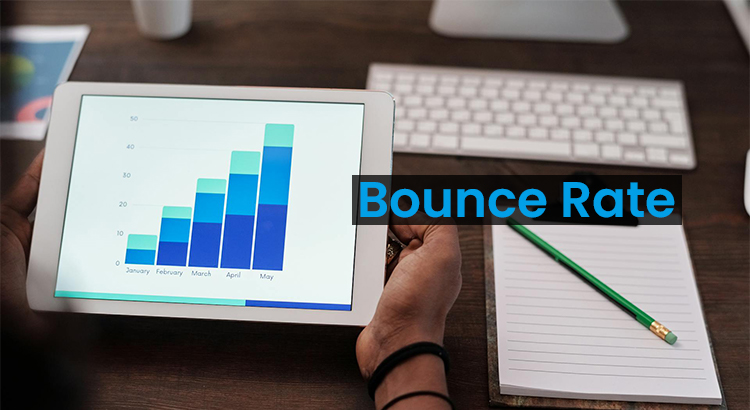Understanding what is bounce rate and it is crucial for enhancing user experience, optimizing conversion rates, and bolstering online success. Bounce rate is an important metric in web analytics that reflects the percentage of visitors who navigate away from a site after viewing only one page.
Bounce Rate Definition
Bounce rate is defined as the percentage of single-page sessions on a website, indicating the proportion of visitors who exit without engaging further. This metric is a key indicator of user engagement and the effectiveness of a website in retaining its audience.
How to Measure Bounce Rate?
To measure bounce rate accurately, it’s essential to segment the analysis. For instance, differentiating between the bounce rates of a blog page and a landing page provides a more nuanced perspective.
A high bounce rate on certain pages might be expected, depending on their purpose, while others, like landing pages, should ideally have lower bounce rates. Additionally, bounce rate can be a valuable tool for A/B testing, aiding in the refinement of page designs.
Importance of Improving Bounce Rate
- Enhanced User Experience: Reducing bounce rates ensures visitors find relevant content, fostering a positive experience and encouraging prolonged engagement.
- Improved SEO Ranking: Lower bounce rates positively influence search engine algorithms, potentially boosting your website’s visibility and ranking.
- Increased Conversion Opportunities: Engaged visitors are more likely to convert. Lower bounce rates indicate a higher potential for lead generation and sales.
- Optimized Content Relevance: Lower bounce rates indicate that your content is resonating with users, helping refine and tailor your offerings for better relevance.
- Enhanced Credibility and Trust: A website with lower bounce rates signals reliability and value, building trust with visitors and potential customers.
How to Reduce Bounce Rate?
1. Fix Technical Issues
Address slow loading and broken links to provide a seamless user experience, reducing frustrations and enhancing the overall website performance for better engagement and lower bounce rates.
2. Optimize for Mobile
Ensure mobile responsiveness, accommodating the growing mobile user base by delivering an accessible and user-friendly experience, ultimately minimizing bounce rates.
Read More: Importance of Mobile Optimization for Elevating Your Website Experience
3. Focus on Entry Points and User Intent
Tailor landing pages to match user intent, creating a more personalized experience that encourages exploration, making visitors more likely to stay and reducing immediate exits.
4. Improve User Experience
Enhance design, navigation, and content to create an enjoyable and engaging user journey. A positive user experience fosters longer visits, lower bounce rates, and increased interaction with the site.
Related article: Why Is User Experience Crucial for SEO?
5. Keep an Eye on Your Data
Regularly analyze website analytics to gain insights into user behavior, identify patterns, and make informed adjustments. Data-driven decisions contribute to ongoing website optimization, ensuring sustained user engagement and reduced bounce rates.
6. Enhance Content Relevance
Develop compelling, relevant content that aligns with user expectations. By delivering valuable information, you keep visitors engaged, encouraging them to explore more pages and reducing bounce rates.
Useful Article: Content Quality vs. Quantity: Striking the Right Balance
7. Streamline Call-to-Actions (CTAs)
Ensure your website’s CTAs are clear, compelling, and strategically placed. Streamlining the user journey with intuitive CTAs can guide visitors to explore further, contributing to a lower bounce rate.
Summary of Bounce Rate
Bounce rate serves as a critical metric for evaluating website performance and user engagement. By understanding its implications and actively working to reduce it, businesses can enhance user experience, increase conversion rates, and improve their online presence.
Frequently Asked Questions
What Is a Good Bounce Rate on A Website?
A good bounce rate varies by industry and the type of website. Generally, a bounce rate between 26% and 40% is considered excellent, while 41% to 55% is average. However, it’s crucial to consider the specific goals and content of a website when interpreting bounce rate metrics.


